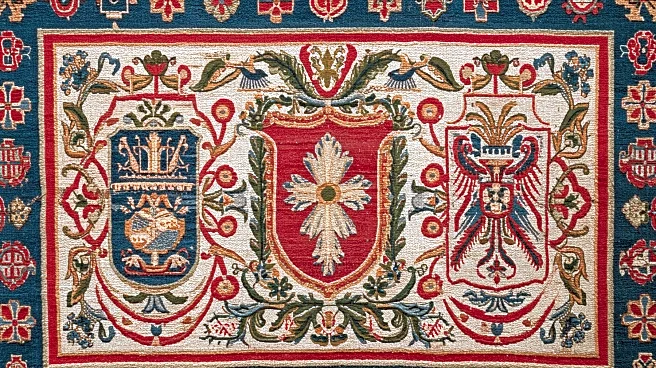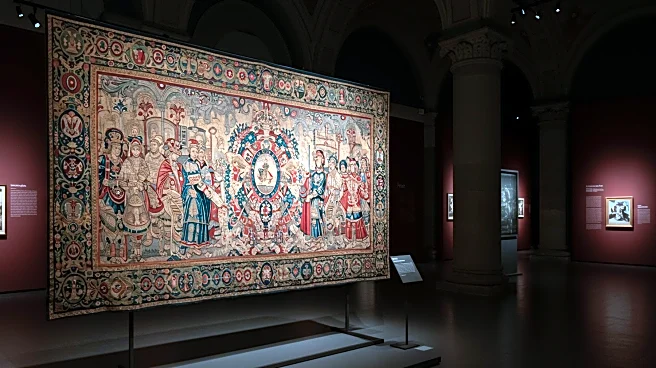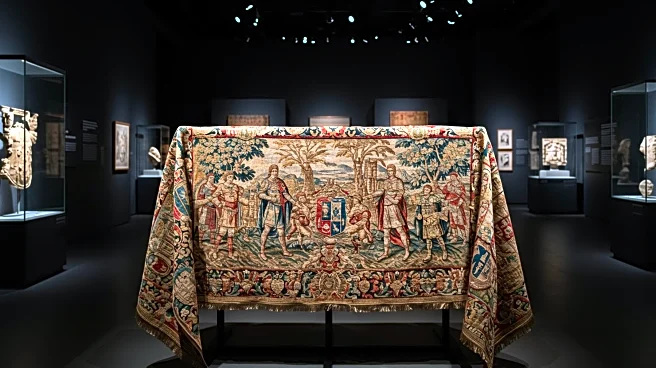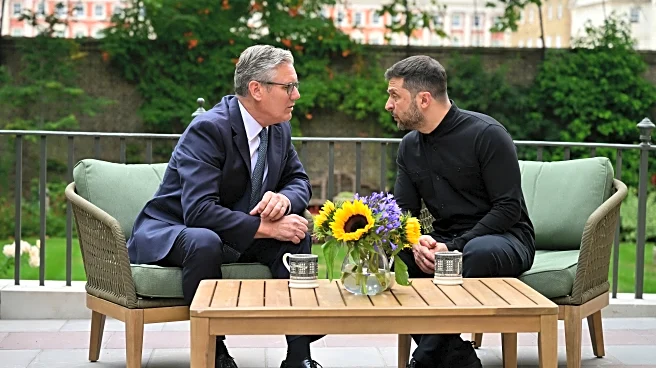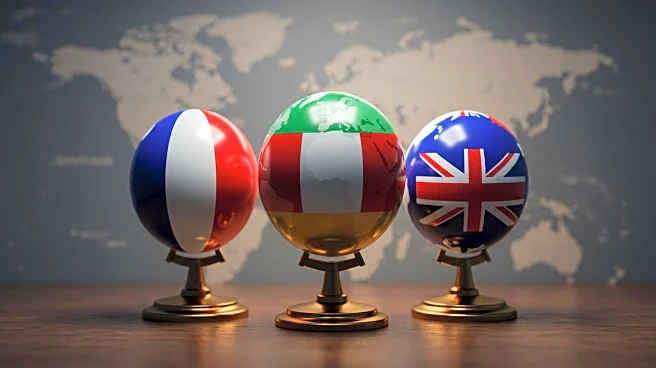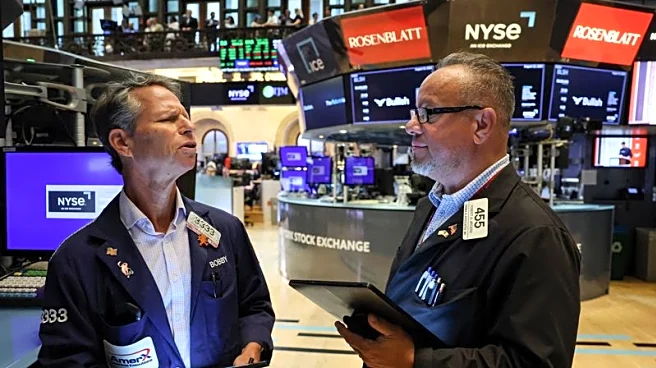What's Happening?
The Bayeux Tapestry, a medieval embroidery depicting the Norman Conquest of 1066, is set to be loaned to the United Kingdom for the first time in 950 years. This decision follows a historic agreement signed by British Prime Minister Keir Starmer and French President Emmanuel Macron. The tapestry will be the centerpiece of an exhibition at the British Museum in 2026. The loan has sparked controversy in France, with tens of thousands signing a petition urging Macron to cancel the loan due to concerns over the tapestry's fragility. The tapestry, believed to have been commissioned by Bishop Odo, a half-brother of William the Conqueror, is considered a piece of propaganda celebrating William's claim to the English throne.
Why It's Important?
The loan of the Bayeux Tapestry is significant as it represents a diplomatic gesture aimed at strengthening relations between France and the UK. It also raises important questions about the preservation of cultural artifacts and the risks involved in transporting such fragile items. The tapestry is a vital historical document that provides insight into 11th-century European customs and the Norman Conquest, which had lasting impacts on English society. The decision to loan the tapestry could set a precedent for future cultural exchanges and negotiations over other historical artifacts, such as the Parthenon Marbles.
What's Next?
The Bayeux Museum, where the tapestry is currently housed, will close for renovations, allowing the tapestry to be loaned to the UK. The British Museum plans to display the tapestry alongside other artifacts related to the Norman Conquest. The loan has prompted discussions about the possibility of displaying the tapestry in Hastings, the site of the Battle of Hastings, to acknowledge the region's historical significance. The decision may influence ongoing debates about the repatriation of cultural artifacts and the role of museums in preserving history.
Beyond the Headlines
The loan of the Bayeux Tapestry highlights the intersection of culture and politics, as cultural exchanges are often used as diplomatic tools. The tapestry's return to Britain has sparked discussions about the continuity of cultural heritage and the responsibilities of nations in preserving historical artifacts. The controversy surrounding the loan underscores the challenges of balancing cultural preservation with international diplomacy.
